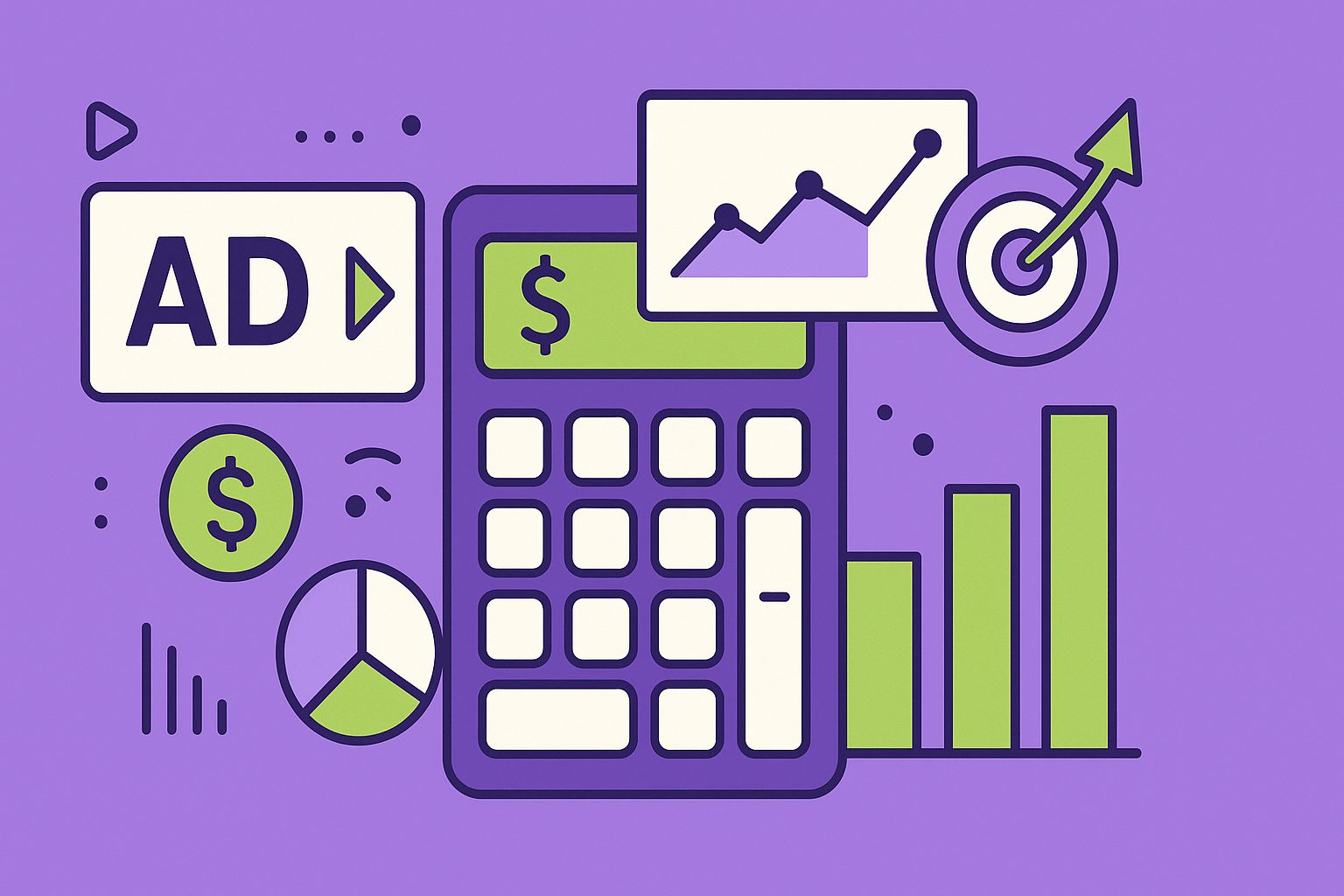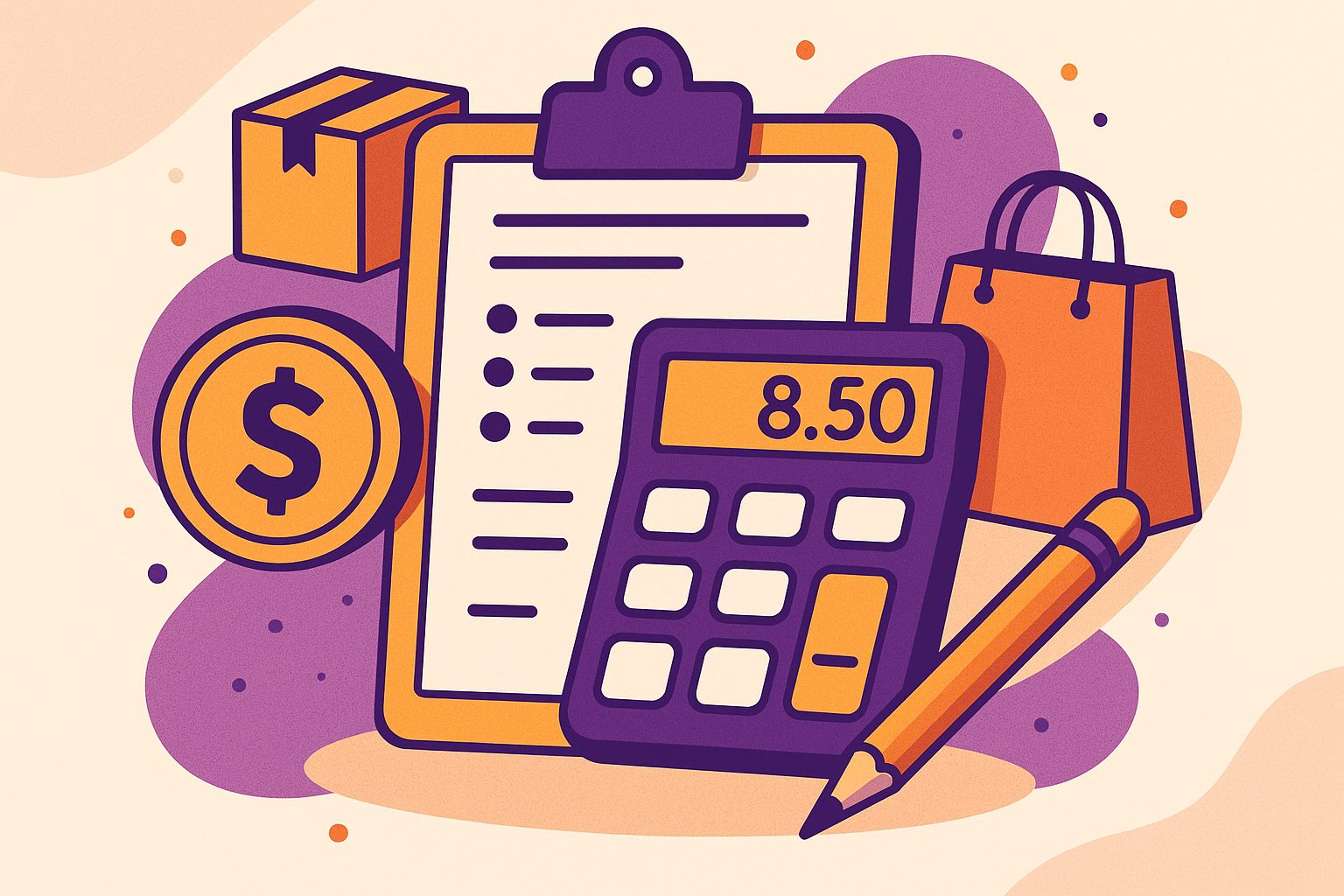Understanding the True Value: Why an ROI Calculator for Ads Matters
In today’s digital marketplace, every dollar spent on advertising carries immense weight. Marketers face mounting pressure to demonstrate tangible returns and justify budget allocations. An ROI Calculator for Ads emerges as a beacon of clarity in this landscape, transforming abstract figures into concrete insights. Far more than just a spreadsheet or a simple form, this tool synthesizes complex data—ad spend, conversion rates, average order values, and overhead costs—into a single, comprehensible snapshot. By translating raw metrics into a percentage or ratio that directly correlates to profits, the calculator empowers businesses to discern which campaigns are fueling growth and which are draining resources. For companies striving to punch above their weight, adopting an ROI Calculator isn’t optional; it’s essential for maintaining a competitive edge and securing stakeholder confidence.
ROI Calculator for Ads
Unlocking the Engine: How Ad ROI Calculators Operate Under the Hood
At its core, an ROI Calculator for Ads functions by aligning investments with outcomes. Advertisers input critical figures—total ad spend, number of conversions generated, average purchase value per conversion, and sometimes variable costs like shipping or platform fees. The formula then computes net profit by deducting total costs from gross revenue before dividing that figure by total ad spend. The resulting ratio, multiplied by 100, yields the return on investment as a percentage. Advanced calculators extend this process by factoring in customer lifetime value, churn rates, and multi-channel attribution. By integrating with analytics platforms such as Google Ads or Facebook Business Manager, these calculators can auto-populate data fields, minimizing manual errors and saving valuable time. What truly distinguishes a robust ROI Calculator is its adaptability: whether you’re running a short-term promotion or a sustained brand-awareness campaign, the tool flexes to accommodate fluctuating budgets, varied conversion goals, and evolving market conditions.
Gathering the Essentials: Key Metrics to Fuel Accurate Calculations
A precise ROI calculation demands accurate inputs. First, determine your total ad spend, including costs associated with creative production, agency fees, and any ad platform surcharges. Next, track conversions—whether purchases, leads, or sign-ups—using reliable analytics tools that capture both direct and assisted conversions. Then, establish the average revenue per conversion by dividing total revenue attributed to ads by the number of conversions. To fine-tune accuracy, incorporate variable expenses such as fulfillment, commissions, and refunds. Seasoned marketers also consider customer acquisition cost segmented by channel, which illuminates where budgets can be reallocated for maximum yield. When these metrics converge in your ROI Calculator, the resulting figure becomes a truthful reflection of campaign performance, empowering you to allocate future resources with pinpoint precision rather than relying on intuition or outdated heuristics.
Interpreting Your Results: From Figures to Strategic Decisions
Once the ROI Calculator spits out a percentage, the real work begins. A positive ROI indicates that revenue exceeds costs, but the story doesn’t end there. Compare ROI across campaigns, channels, and time periods to identify patterns. For instance, a search-engine marketing campaign yielding a 200 percent ROI may warrant increased investment, while a display ad push producing only 20 percent could signal poor targeting or creative fatigue. Contextualize the numbers: a high ROAS (Return on Ad Spend) on a holiday promotion might simply reflect seasonal demand spikes rather than intrinsic campaign strength. Equally important is establishing benchmark ROIs for different tiers of your marketing funnel—awareness, consideration, conversion—so you know when to pause or pivot strategies. By viewing your ROI not as an isolated metric but as a dynamic indicator tied to broader business goals, you transform data points into actionable insights that drive sustainable growth.
Avoiding Common Missteps: Ensuring Your Calculations Remain Unbiased
Even the most sophisticated ROI Calculator can be sabotaged by flawed inputs or misinterpretations. A frequent error involves neglecting hidden costs—software subscriptions, customer support overhead, or creative revisions—that erode profitability but escape traditional budgets. Similarly, over-attributing conversions to a single campaign without acknowledging multi-touch attribution can inflate ROI figures and mislead decision-makers. Data sampling biases, such as focusing only on successful campaigns while ignoring underperformers, can generate a skewed portrait of overall performance. To safeguard accuracy, implement regular audits of your analytics setup, cross-verify data with finance records, and educate stakeholders on the limitations of ROI as a standalone metric. Establish clear definitions for what constitutes a conversion and align them with revenue recognition practices. By preemptively addressing these pitfalls, you maintain the integrity of your ROI calculations and preserve the reliability of strategic choices that depend on them.
Refining the Process: Advanced Techniques for Deeper Insights
As marketing ecosystems grow more complex, basic ROI formulas may feel insufficient. Advanced practitioners leverage cohort analysis to assess how ROI evolves over time, attributing long-term value to initial ad investments. They incorporate customer lifetime value metrics to capture revenue streams beyond the first purchase, revealing whether certain channels attract more loyal audiences. Predictive analytics and machine learning can forecast ROI under various budget scenarios, enabling scenario planning that transcends reactive reporting. Multi-channel attribution modeling—whether linear, time decay, or position-based—illuminates the contribution of each touchpoint along the buyer’s journey. By integrating these sophisticated methodologies into your ROI Calculator for Ads, you transition from retrospective evaluation to proactive optimization, identifying opportunities to scale high-impact campaigns and eliminate waste before it occurs.
Bringing Numbers to Life: Real-World Applications of ROI Insights
Concrete case studies bring the potency of ROI analysis into sharp relief. Imagine an e-commerce brand that deploys a new social media campaign targeting niche hobbyists. The ROI Calculator reveals a modest initial return, but cohort analysis shows that repeat purchases from these audiences triple the effective ROI over six months. Equipped with this insight, the brand reallocates budget to the social channel, fueling sustained growth. In another scenario, a B2B SaaS provider experimenting with content syndication sees soaring click-through rates but negligible revenue impact. The ROI Calculator flags a negative return, prompting the team to halt the campaign and redirect resources to high-performing webinars. Across industries—retail, technology, services—the story is the same: when marketers wield an ROI Calculator adeptly, they transform vague expenditure into strategic investment, steering campaigns toward long-term profitability rather than short-term flashes of vanity.
Peering Ahead: The Evolution of ROI Calculators in Advertising
Technology continues to innovate at a blistering pace, reshaping how ROI Calculators interact with ad ecosystems. Emerging platforms harness artificial intelligence to automate the calculation process, drawing live data from ad servers, CRM systems, and point-of-sale software. Predictive models increasingly suggest optimal budget allocations in real time, adjusting bids and targeting parameters on the fly to maximize projected ROI. Integration with marketing automation suites turns ROI calculations into triggers for activation, such as scaling winning ads or pausing underperforming placements without human intervention. As privacy regulations tighten and third-party cookies wane, ROI Calculators will lean more heavily on first-party data and probabilistic attribution models to maintain accuracy. In this dynamic environment, staying ahead means adopting tools that evolve alongside ad networks, data privacy frameworks, and consumer behaviors, ensuring your ROI insights remain sharp.
Driving Future Growth: Embedding ROI Culture Across Your Organization
Adopting an ROI Calculator for Ads represents more than a tactical shift; it signals a cultural commitment to data-driven decision-making. Leaders who champion ROI transparency foster accountability across marketing, finance, and executive teams alike. Regular ROI reporting becomes a cornerstone of performance reviews, guiding discussions about resource allocation and long-term strategy. Cross-functional collaboration ensures that insights gleaned from ROI analyses inform product development, pricing strategies, and customer retention initiatives. By embedding ROI literacy throughout your organization, you create a virtuous cycle where every department contributes to and benefits from clearer visibility into campaign performance. In an era defined by rapid change and razor-thin margins, cultivating such a culture may prove the most powerful competitive advantage of all.
Final Thoughts: Confidently Navigating Your Advertising Investments
In the crowded digital arena, the ability to quantify the true returns of advertising spend is non-negotiable. An ROI Calculator for Ads offers a structured, scalable way to elevate marketing from guesswork to precision science. By understanding its mechanics, feeding it accurate data, and interpreting its outputs judiciously, you unlock a roadmap to smarter budget allocation and higher profitability. As technology advances and market demands shift, your commitment to rigorous ROI analysis will safeguard your investments and illuminate the path to sustainable growth. Whether you’re a seasoned performance marketer or a business leader seeking clarity, embracing an ROI Calculator heralds a future where every advertising dollar works harder—and delivers more.




